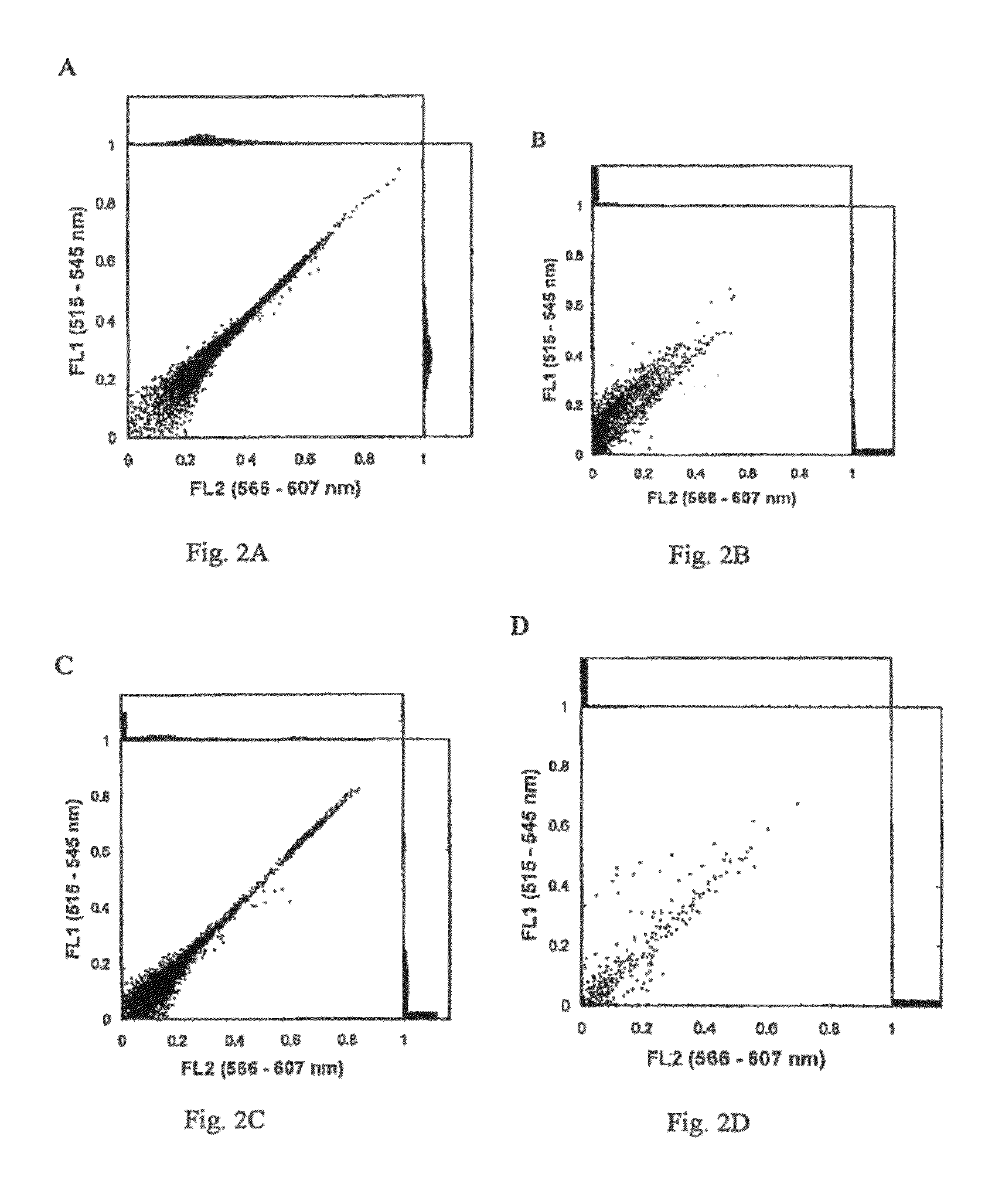Methods for evaluating the aggregation of a protein in a suspension including organopolysiloxane and medical articles coated with organopolysiloxane containing a protein solution
a technology of organopolysiloxane and protein solution, which is applied in the field of methods for evaluating the aggregation of proteinaceous material in suspension comprising organopolysiloxane and medical components, can solve the problems of protein aggregates that are highly susceptible to non-native aggregate formation, precipitates, and cannot be used in human health car
- Summary
- Abstract
- Description
- Claims
- Application Information
AI Technical Summary
Benefits of technology
Problems solved by technology
Method used
Image
Examples
example a
[0138]This example studies the effects of sucrose and a non-ionic surfactant (Tween 20® polyoxyethylene 20 sorbitan monolaurate non-ionic surfactant) on aggregation of Herceptin® traztuzumab monoclonal antibody (mAb) and on silicone oil droplet characteristics. In this investigation, no attempt was made to distinguish mAb adsorption to silicone oil from mAb aggregation nucleated by silicone oil. Instead, any irreversible association between silicone oil and mAb is simply referred to as “aggregation”.
[0139]Four formulations were analyzed in this study, as detailed in Table 1. Each formulation was analyzed by fluorescence activated particle scanning to determine particle composition. For a subset of these formulations, fuller analysis was performed. Suspension turbidity, silicone oil droplet number concentration, and silicone oil droplet size distribution were measured. After filtration, Herceptin® trastuzumab concentrations were measured in aqueous filtrate.
[0140]A solution of the re...
example b
Effect of Oil Viscosity on Oil Loading in Suspension
[0166]Medical grade silicone oil was added to aqueous solutions with and without non-ionic surfactant as shown in Table 2. Concentration and viscosity of silicone oil in each sample is set forth in Table 2 below. FIG. 7 shows the influence of oil viscosity on oil loading indirectly by measurement of optical density at 600 nm. Optical density at 600 nm (OD600) is an indirect measure of suspended oil concentration. As shown in FIG. 7 and Table 2, lower oil viscosity reflects higher initial OD600, which in turn permits higher oil loading. As shown in FIGS. 8 and 9, there was no qualitative difference in coalescence behavior of suspended oil droplets of differing viscosity (1,000 cSt vs. 12,500 cSt) polydimethylsiloxane for the samples tested.
[0167]
TABLE 2Oil TypeInitial(coil = 0.5%)OD600 (au) 350 cSt0.21 1000 cSt0.1212500 cSt0.04 350 cSt0.530.1% Tween 20 ® 1000 cSt0.130.1% Tween 20 ®12500 cSt0.160.1% Tween 20 ®
example c
[0168]Silicone oil was labeled as described above in Example A by dissolving Nile Red dye in silicone oil at 5 mg / ml. The monoclonal antibody used in the study was the standard commercially available Pacific Blue® Mouse Anti-human CD4 mAb (clone RPA-T4, Becton, Dickinson and Company). Pacific Blue® dye has an emission maximum of 455 nm. Nile Red dye has an emission maximum of 628 nm, however significant Nile Red emission signal occurs in the detector normally used for R-phycoerythrin (PE), and was the emission detector used for Nile Red-labeled samples for this Example C. Suspensions with Pacific Blue® labeled mAb and Nile Red-labeled silicone oil were prepared as described above in Example A and analyzed with a BD™ LSR II Flow Cytometer analyzer (Becton, Dickinson and Company) using violet laser excitation (405 nm) for Pacific Blue® detection (450 / 50 BP filter) and blue laser excitation (488 nm) for Nile Red detection (585 / 42 BP filter). All fluorescence measurements were done usin...
PUM
| Property | Measurement | Unit |
|---|---|---|
| concentration | aaaaa | aaaaa |
| concentration | aaaaa | aaaaa |
| weight percent | aaaaa | aaaaa |
Abstract
Description
Claims
Application Information
 Login to View More
Login to View More - R&D
- Intellectual Property
- Life Sciences
- Materials
- Tech Scout
- Unparalleled Data Quality
- Higher Quality Content
- 60% Fewer Hallucinations
Browse by: Latest US Patents, China's latest patents, Technical Efficacy Thesaurus, Application Domain, Technology Topic, Popular Technical Reports.
© 2025 PatSnap. All rights reserved.Legal|Privacy policy|Modern Slavery Act Transparency Statement|Sitemap|About US| Contact US: help@patsnap.com



